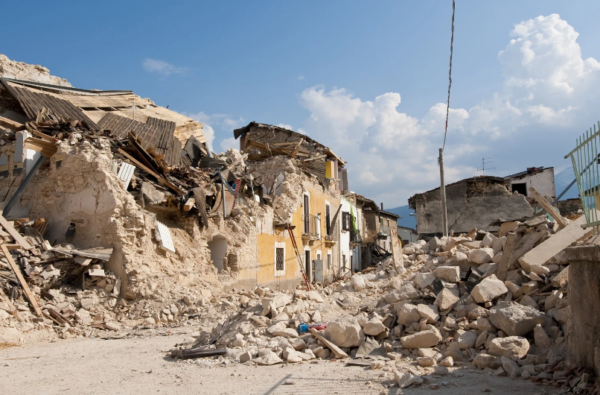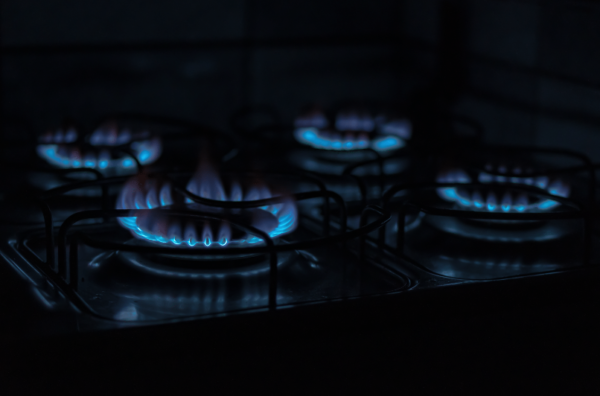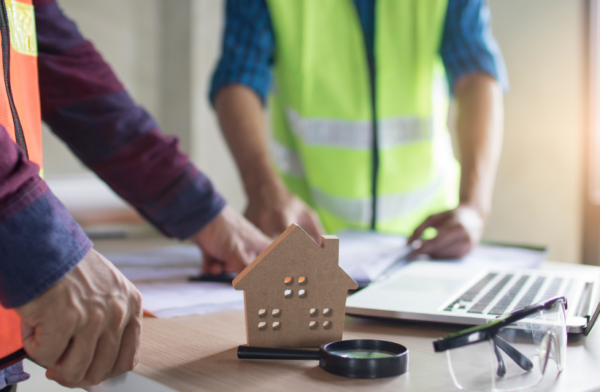How to Inspect Your Building After an Earthquake? Gazing upon the remnants of your abode post an earthquake is of utmost importance to guarantee its habitability. The earthquake’s impact may have inflicted extensive damage to the Structural Integrity, leading to a hazardous environment, including but not limited to, gas leakages, electrical malfunctions, and destabilized base.
If you reside in a seismic area, it is paramount to acquaint yourself with inspecting your building after an earthquake to secure the well-being of you and your loved ones.
In this comprehensive article, we shall provide you with a detailed handbook on how to inspect your building after an earthquake.
We shall explain the measures to undertake to discern the severity of the wreckage, recognize potential dangers, and ensure the safeguarding of your dwelling.

How to Detect Gas Odors After an Earthquake
Swiftly detecting gas odors after an earthquake is a prerequisite to secure the safety of the edifice and its inhabitants. The initial course of action is to use your olfactory senses. In the event of a potent gas smell, it is imperative to immediately evacuate the premises and summon either the gas company or emergency services.
It is critical to disable all potential ignition sources, including light switches and electrical appliances, which may trigger sparks leading to a potential gas explosion. Last, opening doors and windows to facilitate fresh air circulation within the premises helps mitigate the chances of a blast.
Steps for Assessing Electrical Damage in Your Building
Evaluating the electrical damage in your building after an earthquake is a crucial step in ensuring the security of the occupants. Initially, power to the building, including the primary and individual circuit breakers,(Water Recovery Rate) must be shut down to thwart any electrical shocks or blazes. Subsequently, meticulously scrutinize the electrical panels, wires, and fixtures for any indications of damage.
A licensed electrician must rectify any damage before re-establishing power. Finally, the electrical system must be tested by a licensed electrician once we have performed the repairs to certify that it is secure to operate.
Inspecting for Debris and Hazardous Materials After an earthquake
Inspecting for debris and hazardous materials after an earthquake is a critical measure to ensure the well-being of the edifice and its occupants. Firstly, examine both the interior and exterior of the building for discernible evidence of destruction, including cracks, holes, or shattered windows. In the event of any visible indications of destruction, it is imperative to vacate the premises and promptly inform emergency services. Second, survey the edifice for any perilous materials, such as hazardous chemicals or gas leaks, and undertake requisite action if necessary. Last, it is crucial to eliminate any debris from the edifice and the surrounding vicinity, as it may jeopardize the occupants’ security.
Evaluate Structural Integrity to Inspect Your Building After an Earthquake

Conducting an appraisal of a building’s Structural Integrity post an earthquake is a critical aspect of ensuring its security. Initially, scrutinize the building’s exterior for any perceptible evidence of destruction, such as cracks in the walls, roof, or foundation. If there are visible indications of damage, it is essential to vacate the premises and contact emergency services without delay.
Next, survey the building’s interior for any evidence of structural damage,( Poor blood circulation in the legs ) including cracks in the walls or ceiling, or any other noticeable indicators of damage. Last, if there are any apprehensions regarding the building’s structural stability, it is crucial to consult a licensed engineer or building inspector for a professional evaluation.
Examine External Walls and Roof
After an earthquake, inspecting the external walls and roof of a building is crucial to assess any discernible damage or structural instability. This entails searching for cracks, broken tiles, or destruction to the roof or walls. If it identified any damage, it is essential to evacuate the building and gain professional help.
Assess the Stability of Internal Walls and Ceilings
Assessing the internal walls and ceilings after an earthquake is vital to determine their structural integrity. It is important to inspect for any cracks, holes, or other indications of structural harm, such as sagging or bulging. If any damage is detected, it is imperative to evacuate the building and seek professional help.
Check for Gas Leaks to Inspect Your Building After an Earthquake

Examining the building for gas leaks after an earthquake is a crucial measure to ensure the security of the edifice and its occupants. The primary step is to use your sense of smell to detect any potent scent of gas. If a gas odor is noticeable, it is essential to immediately evacuate the premises and inform the gas company or emergency services. It is critical to deactivating all potential sources of ignition, including light switches and appliances, as they may spark and ignite the gas. Last, to mitigate the risk of an explosion, it is necessary to open windows and doors to allow fresh air to flow into the building.
Detecting Gas Odors
Post an earthquake, examining for gas odors is critical as it may show a gas leakage. If any gas odor is detected, it is essential to evacuate the building and promptly notify emergency services. It is advisable not to switch on lights, uses electrical switches or appliances, or use a telephone until they evacuated the building.
Inspecting Gas Lines and Appliances
Examining all gas lines and appliances, including stoves and water heaters, for any destruction after an earthquake is crucial. Check for leaks, cracks, or other indications of damage, and if any damage is detected, turn off the gas supply and evacuate the building immediately.
Inspect Plumbing Systems to Inspect Your Building After an Earthquake

Conducting a plumbing system examination after an earthquake is crucial in guaranteeing the security and operability of a building. The primary step is to deactivate the primary water supply to the building to prevent any potential water damage or leaks. The next step is to inspect the pipes, fixtures, and appliances for any visible signs of damage, including cracks, leaks, or broken pipes. If any damage is detected, it is critical to have a licensed plumber mend it before reactivating the water supply. Lastly, it is important to verify the water pressure and test the plumbing system to ensure its optimal performance.
Checking for Broken Pipes
Broken pipes can lead to severe water damage and must be detected and repaired as soon as possible. After an earthquake, it is necessary to scrutinize all pipes, including those for water, gas, and sewage, for any cracks, leaks, or other indications of damage.
Assessing Damage to Fixtures and Drains
Checking fixtures like sinks, toilets, and bathtubs for damage after an earthquake is also essential. Inspect the stability and state of each fixture, and if any damage is detected, turn off the water supply and evacuate the building immediately.
Assess Electrical Damage to Inspect Your Building After an Earthquake to know How to Inspect Your Building After an Earthquake?
Evaluating the aftermath of an earthquake regarding electrical harm presents a crucial aspect of securing the building and safeguarding its inhabitants. Initially, all power sources, including the principal and any personal circuit breakers, must be shut off to avoid potential electrical shocks or infernos. Then, meticulously examine the electrical panels, wires, and apparatuses for any indications of destruction. If there is any destruction, it is paramount to employ a licensed electrician to restore it before reactivating the power supply. Ultimately, after repairing the electrical damage, it is of utmost importance to verify the safety of the electrical system by hiring a licensed electrician to carry out an assessment.
Checking for Visible Damage to Wiring and Electrical Components
Identifying visible damage to electrical wiring and components, such as sparks, burned-out fixtures, and broken switches, is necessary to determine the electrical risk post-earthquake. It is vital to examine all electrical wiring and components thoroughly after an earthquake and seek professional assistance immediately if they find any damage.
Assessing Power Outages and Electrical Hazards
Assessing and addressing power outages and electrical hazards promptly after an earthquake is crucial. Check for any flickering lights, sparking outlets, or other indications of electrical hazards, and if any are found, evacuate the building immediately and seek professional help.
Look for Signs of Fire Hazards to Inspect Your Building After an Earthquake to know How to Inspect Your Building After an Earthquake?

To safeguard a building and its inhabitants post an earthquake, it is vital to identify potential fire hazards. The first step is to scrutinize the building for indications of fire, for instance, smoke or flames. In case of a fire, it is imperative to evacuate the building and summon emergency services immediately. The subsequent step is to examine the building for potential fire sources, such as electrical glitches, gas leaks, or exposed wires. Finally, it is vital to eradicate all potential fire hazards by deactivating electrical power, repairing any destruction, and ensuring that all equipment and fixtures are in a perfect working state.
Identifying Damaged Electrical Wiring and Outlets
Identifying and repairing damaged electrical wiring and outlets after an earthquake is critical to avoid electrical hazards. Inspect all electrical wiring and outlets for damage after an earthquake, and if they find any, evacuate the building immediately and seek professional help.
Surveying for Flammable Materials and Debris.
Surveying and properly disposing of flammable materials and debris after an earthquake is crucial. Check for any flammable materials, such as gasoline, oil, or chemicals, and if they find any, evacuate the building immediately and seek professional help.
Survey the Property for Debris and Hazardous Materials to Inspect Your Building After an Earthquake
To ensure the security of a building and its inhabitants after an earthquake, it is crucial to survey the premises for debris and hazardous materials. The initial step is to scrutinize the adjacent area for any visible debris or hazardous materials, like broken glass, downed power lines, or spilled chemicals. If any hazardous material is present, it is essential to evacuate the vicinity and summon emergency services. The subsequent step is to examine the interior of the building for any debris or hazardous materials, such as shattered fixtures, appliances, or furniture. Last, it is necessary to eliminate any debris and hazardous materials, while following all safety regulations and protocols, to guarantee a secure atmosphere for all inhabitants.
Clearing Debris from Accessible Areas
Clearing debris from accessible areas is a critical step in ensuring the safety of a building after an earthquake. Remove any broken fixtures, furniture, or other debris, and ensure that they are properly disposed of following all safety protocols and regulations.
Identifying and Removing Hazardous Material Safely
You must exercise extreme caution when dealing with hazardous materials. You need to be on high alert and strictly follow all safety protocols and regulations to prevent any harm to you or anyone else. If you come across any hazardous materials after an earthquake, for the love of all that’s good and holy, immediately contact emergency services and seek professional help to get rid of it safely and responsibly.
MORE TOPICS
elasticity allows us to improve upon our understanding of supply and demand
FAQs
What should I look for when inspecting the structural integrity of my building after an earthquake?
In the aftermath of an earthquake, it is imperative to investigate a building's structural integrity. It must exercise vigilance in identifying any conspicuous cracks or gaps in the walls, floors, or ceilings. It is also prudent to scrutinize the soundness of chimneys, fireplaces, and stairways. Careful observation of any indications of displacement or settling of the foundation is essential. Failure to properly identify and address these issues can cause dire consequences.
How can I tell if there is a gas leak in my building after an earthquake?
To detect a gas leak in a building post-earthquake, one should remain vigilant for several telltale signs. These include actively listening for the sound of gas escaping, observing any dead or discolored vegetation near the structure, and being mindful of any abnormal smells akin to the stench of rotten eggs. It is essential to exercise caution and take prompt action in the event of a suspected gas leak, as the repercussions can be perilous.
What steps should I take to inspect the plumbing systems in my building after an earthquake?
Following an earthquake, it is imperative to evaluate the plumbing systems within a building. This should entail scrutinizing the plumbing for any sign of leakage, broken pipes, or harm to fixtures and drains. It is prudent to turn off both the water and gas supply to the building and contact a specialist immediately if any significant damage is suspected. A timely and comprehensive inspection is critical to preventing further damage and ensuring the safety of those on the premises.
How can I assess the electrical damage in my building after an earthquake?
Post-earthquake, assessing the electrical damage to a building is of utmost importance. One must meticulously inspect the wiring and electrical components for any apparent damage. It is crucial to note any power outages and watch out for any indications of electrical hazards, including but not limited to sparking or short circuits. It is crucial to exercise caution when handling electrical equipment and to seek expert assistance to avoid any potential safety risks.
What signs should I look for to identify fire hazards in my building after an earthquake?
Identifying fire hazards in a building after an earthquake is critical to prevent any potential disasters. One must inspect the electrical systems and identify any visible damage. One must look out for any flammable materials or debris that may have fallen and pose a significant risk of fire. It is equally crucial to ensure that all electrical systems are functioning safely and to address any issues promptly. Being vigilant and taking appropriate precautions can significantly mitigate any potential fire hazards.

